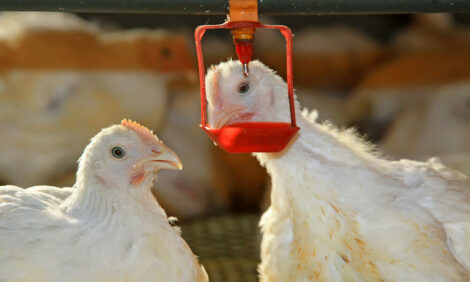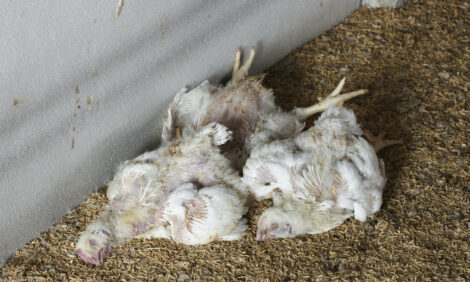



Grain price surge will help NZ farmers
NEW ZEALAND - New Zealand dairy farmers will benefit enormously from an inevitable increase in international grain prices, says Irish dairying guru Michael Murphy.Speaking to a conference of Positive Dairy Farmers held in Ireland recently, Mr Murphy, who was the keynote speaker at the Westpac Whareroa Dairy Conference in 2002, said cheap grain was now history and this opened up huge opportunities for efficient grass farmers such as those in New Zealand and Ireland and the western regions of the United Kingdom.
"I believe the medium- to long-term outlook for Irish dairy farmers is more positive now than at any time since we went into the EU in 1973. However, to fully capitalise on this we need to take decisive action if we want a vibrant, prosperous, expanding Irish dairy sector," he said.
"Essentially I'm suggesting that cheap grain is now history. This will be an added cost in the very short run but will over time strongly improve the supply demand balance both in the EU dairy market and globally in favour of farmers. Much higher grain prices will lead to less meal fed to cows worldwide. Less meal fed will lead to less milk production.
"This will lead to sustainable higher real prices for milk produced by low cost dairy farmers. Markets are dynamic and will seek to adjust to shortage. So to attempt to predict exact price effects over time would be futile. But the overall trend is hugely favourable."
Mr Murphy said this would give a large and sustainable competitive advantage to highly efficient grass managers in Ireland, New Zealand and other good pastoral areas.
"I'm more optimistic now about the future of Irish dairying than I have been for 30 years. I believe the benefits will be sustainable over decades."
But Mr Murphy sounded three notes of caution:
1) 2007 and 2008 will be very difficult years with the cost price squeeze of the last 15 years continuing and there will be the added difficulties and costs of complying with nonsensical regulations;
2) It's a lot easier to identify the 99 per cent probability of a coming trend than to predict exactly when a trend kicks in; and
3) Highly efficient grassland managers will benefit hugely from the coming trend. Poor grassland managers won't. After (Dexcel scientist) Adrian Van Bysterveldt's visit to Ireland last year a grass measurement system was set up with 13 monitor farms across the country. Initial indications are that a dairy farmer on average profit levels of E350 (about $1000) per cow can increase profits by E200 to E300 a cow within two years and can push on over five years to profit levels of E800 a cow.
Mr Murphy based his predictions on the end of cheap grain to a number of factors, including the shortage of stocks of wheat and corn globally in 2006, with wheat demand outstripping supply by eight million tonnes and corn supplies short by 27 million tonnes.
"Demand has outpaced supply for the last six years. The deficit has been met by reducing stocks over that period. Corn inventories are now at about 63 days of forward cover; down from over 150 days of forward cover only six years ago- and lower than they have been for over 30 years.
"Wheat inventories are now at about 85 days of forward cover which is down from over 300 days of forward cover only six years ago. Days of forward cover are now lower than at any time since 1973 which was the last great bull market in grain,"n Mr Murphy said.
China, in particular, had seen its stored wheat stocks fall from 103 million tonnes in 1998 to 35 million tonnes now. India's wheat stocks had fallen from 24 million tonnes to three million tonnes over the last three years.
"Wheat is up in price by more than 50 per cent year to date; corn is up 75 per cent, but this story is only beginning. In commodity production price is chiefly determined by the supply-demand balance. More demand than supply leads to price rises; and vice versa.
"For about 25 years from the mid 1970s, commodities markets worldwide were in a slump i.e. in a bear market with low prices. Since then, we have seen a huge shift globally in commodity markets. Over the last 10 years we have gradually seen hard commodities swing into a bull market, e.g. oil, cement, zinc, nickel, copper, silver, platinum, etc. Occasionally, prices fall somewhat as demand temporarily drops, or more supply is brought on stream as we have seen this month, but essentially we are in a fantastic bull market for hard commodities.
"The informed view is that we are just at the early stages of a period where soft commodities (i.e. foodstuffs) will join this trend. Sugar in 2005 and grain in 2006 are the first soft commodities to join the bull market."
Source: TARANAKI DAILY NEWS









